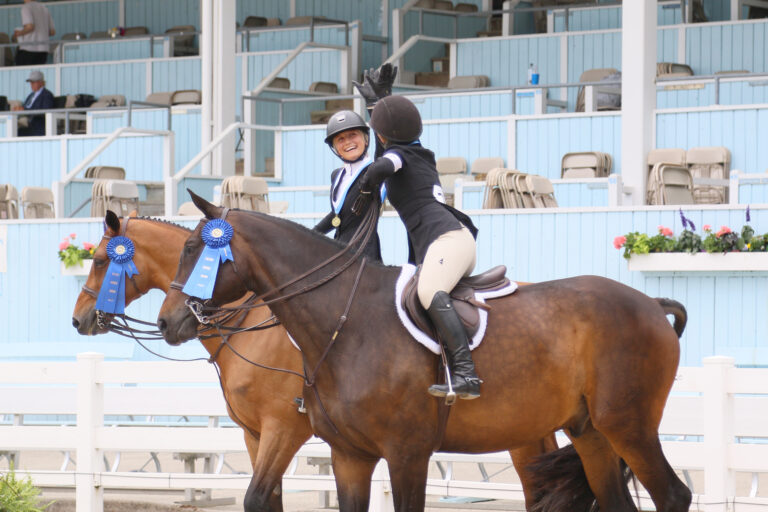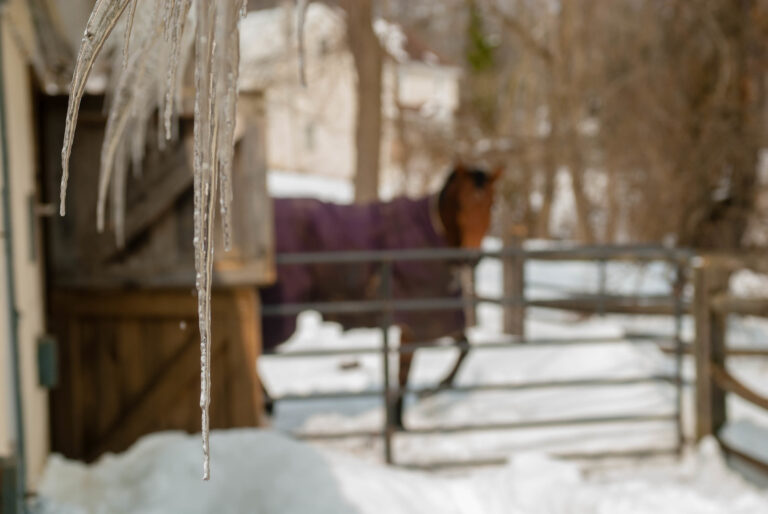Gadgets are everywhere in the horse world; we might as well be as educated about them as possible. What’s a gadget? In my classical world, it’s anything beyond a simple snaffle and a plain cavesson, adjusted with two fingers’ space underneath the cavesson. A large number of gadgets are available to us. For the purposes of this column, however, we are only going to discuss the use of draw reins.
I have been ambivalent about even writing this column, concerned that some readers might misunderstand me and run out to buy a set of draw reins, with predictable results. You have probably heard the warning that “draw reins are a razor blade in a monkey’s hand.” The implication is that, just as the razor in a monkey’s hand can either give you a close shave or cut your throat, draw reins can accelerate your horse’s education or permanently spoil him. In both cases, the result depends on how the tool is used. However, I know that sooner or later you are going to use draw reins, so I will try to tell you the truth as I understand it.
The Roots of Resistance
Here’s why draw reins have such destructive potential: When you use them for the first time, it probably will be because you are stuck in the training of your horse or just frustrated at his unwillingness to listen to your aids. In other words, you see draw reins as a shortcut for overcoming his resistance. If that is the case, you have already made your first mistake: You must never do anything with your horse from frustration or temper but rather from a dispassionate judgment that you can improve him by changing your methods.
First, let’s examine the concept of resistance. While there are several reasons that you perceive your horse as being resistant, unwillingness is the last and least important.
- The most common reason for apparent resistance is simple lack of understanding on the horse’s part. It is very difficult to train a creature who outweighs us by 1,000 pounds if he does not understand the language (our aids) we are using to communicate with him. It is no good asking your horse for the XYZs if you first have not taught him his ABCs. In this instance, draw reins can become another aid, used in the same manner as your essential aids—your legs and hands—to produce a horse who moves willingly and trustingly from your legs into your hands.
In the past, your horse may have been taught that an incorrect response was acceptable—for example, speeding up when you close one leg at the girth. The fact that he will now consistently produce that incorrect response is not resistance; it is faulty education, and you must now start the process of re-education through discipline. Discipline is not just whips and spurs, it is a consistent pattern of behavior.

- Another common reason for resistance is that you are asking your horse to work beyond his level of self-carriage. I can conceivably use gadgets to put a 4-year-old horse into a Grand Prix dressage frame, but I will not be able to ride him there. His performance will get worse, not better, until I find his point of self-carriage and resume his education at that point. (I discussed self-carriage in my October 2009 column “Harmony through Self-Carriage.“)
- Your horse will also resist if he feels pain when he tries to do what you are asking, but that resistance is caused by inability rather than unwillingness on his part. For example, a mature horse may work very well in a lower-level dressage frame but then become resistant when you ask for more engagement. It is possible that arthritic changes or other minor injuries in his body make it uncomfortable, even painful, for him to do what you are asking. Modern veterinary medicine can often diagnose and treat such conditions, and you should examine this possibility before you decide that your horse is resistant.
- The most common misperception about resistance is that your horse is simply a jerk. I have already made that mistake. Don’t repeat my error. Your horse did not wake up this morning thinking, Boy, I am really going to turn her crank today. His mind does not work that way. He is resisting your wishes not because he is stubborn or unwilling but because of one of the factors that I’ve described above.
Make Sure Before You Start
A couple of important points before we discuss the use of draw reins:
First, in order to use this gadget correctly, you must have a stable position, meaning an independent seat and extremely quiet and sensitive hands. Until you are able to be quiet in the saddle, you should avoid the use of draw reins. This requirement alone is sufficient to put their use beyond the reach of most riders.
Second, you need to understand why draw reins can cause so much damage to a horse’s training. The incorrect use of draw reins will produce horses who are overflexed on short necks with correspondingly flat backs and disengaged hind legs. Do not use draw reins to shorten your horse’s neck or “put a head set on him.” Use them to lengthen and stretch his back, teaching him to stretch his body, seeking the outside rein from the pressure of your inside leg. Train the hind leg, not the neck.
Finally, before determining what type of draw reins to use, decide if you need them at all. If your horse refuses to go forward or accept any contact or—even worse—if he travels with his chin on his chest, then draw reins are not for him.

If your horse has a tendency to go in an inverted shape (sometimes referred to as a “stargazer”) then you need draw reins that attach to the girth between his legs. If your horse has learned to freeze his body without raising or lowering his head and neck, attach the draw reins close to the pommel so that the action of the reins is parallel with the action of your hands.These two positions of draw reins will help lead your horse into a long-and-low posture. From this shape, you can teach him to engage his hind leg and accept the outside rein.
Correct Usage
The contact with the outside rein and draw rein is created by the action of your inside leg, not by pulling back with the outside rein. Bring your horse forward to your hand; do not bring your hand back against his mouth. This is probably the single most important point I can make about the use of draw reins—do not pull back. Remember, you are trying to lengthen and lower your horse, not shorten his neck. His elevation will increase as his engagement improves.
When you close your inside leg, the action of your outside hand should be like squeezing a sponge, not like pulling on a rope. Have the sensation that you can gradually move your elbow forward while keeping a consistent contact with your outside rein. Soften the inside rein at the same time so that your horse is between one leg (your inside leg) and one hand (your outside hand). In Riding Logic, Wilhelm Museler says you should imagine that you have a stick from your outside elbow to your horse’s mouth, and that by closing your inside leg you can push the stick forward, causing your horse to stretch his body into the connection. Lucinda Green, the world-famous eventer and clinician, once reminded me that those sticks are twigs, not tree trunks.
A last word on this discussion: I know I give a lot of advice in this column based on classic horsemanship. I train according to my understanding of classical principles because they are the best means we have of making sure that our horses are comfortable as well as educated. Although I may come across as an ivory-tower egghead in my columns, in my other job, I train horses and riders in the real world, which gives me a fair idea of what happens with them in their day-to-day work.
The reason I seem to know so much about training horses is not because of my experience, although that helps. It is not because I was well coached, although that helps, too. It is not because I am well read in equestrian training theory, although that really helps. It is because the chances are good that I have already made the mistake you are about to make if you are thinking about draw reins and I learned how to avoid it. It is nice to be regarded as an expert, but it is also humbling because it reminds me of the many mistakes I have made and the painful lessons I have learned.
Thanks to Melissa Stubenberg for hosting the photo shoot at her Kelani Farm in West Grove, Pennsylvania.












